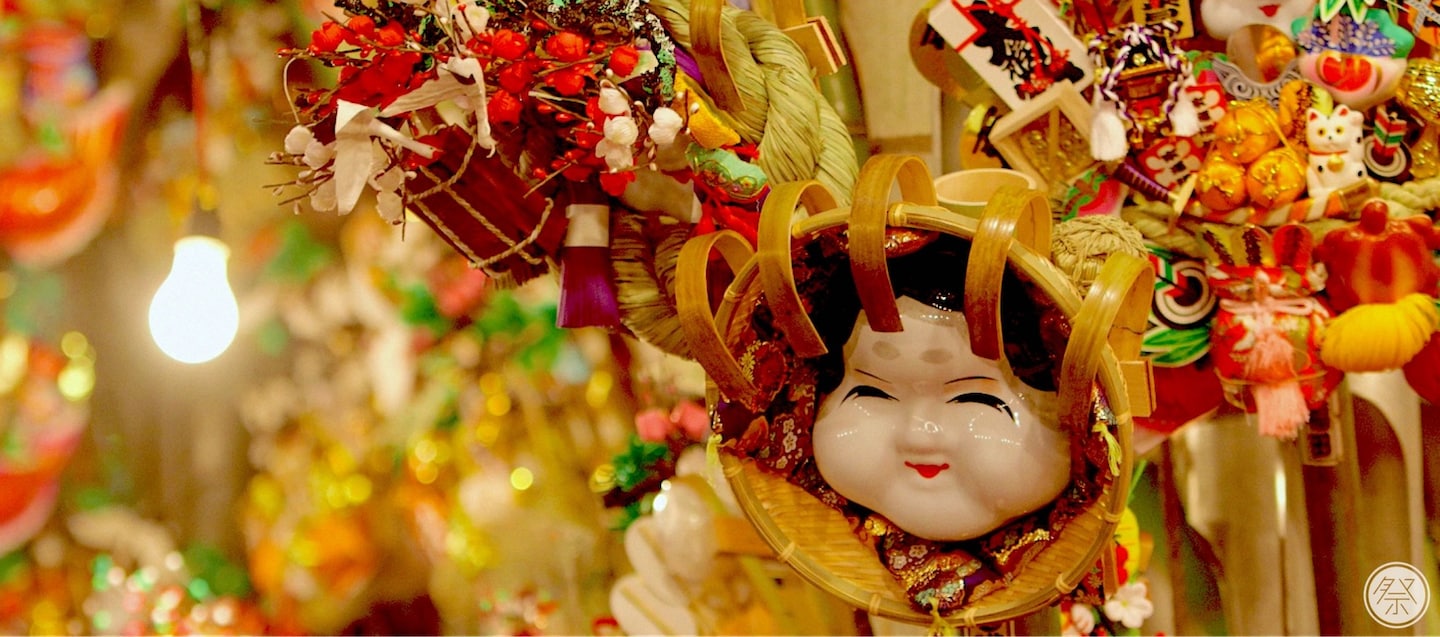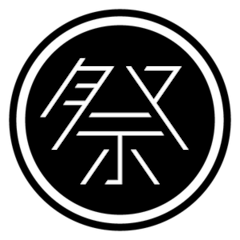Asakusa Tori-no-Ichi
Tori-no-Ichi is a market held two or three times every November at Otori Shrine in Asakusa, Tokyo. The ichiban-daiko drum struck at midnight signals the beginning of the Day of the Tori, kicking off this lively 24-hour market festival.
By OH! MATSURi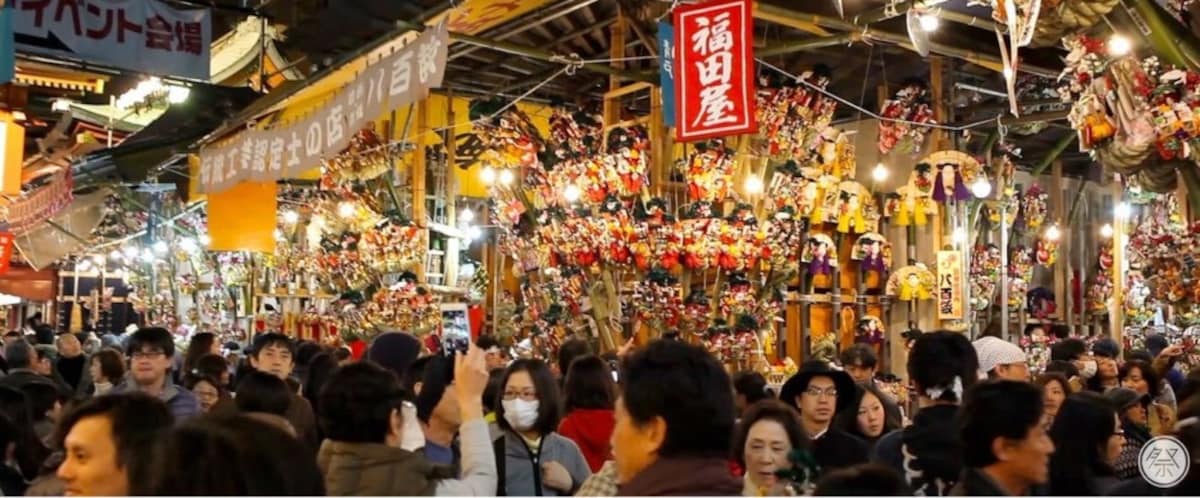
https://ohmatsuri.com/en/articles/tokyo-asakusa-torinoichi
Tori is the rooster in the 12 signs of the zodiac (a sequence of animal names used in Asian cultures for counting years, months, days and hours, as well as the azimuth direction), and the Day of the Tori occurs every 12 days in November—meaning it can occur two or three times depending on the year. When the Day of the Tori occurs twice in November, then that year the markets are called Ni-no-Tori (Second Tori). If it happens three times, then they're called San-no-Tori (Third Tori). Markets of this type are held all over Japan, yet the Tori-no-Ichi at Otori Shrine is the best known of them all.
Approximately 100 outdoor stalls line up inside the shrine to sell “good-luck rakes” (which are said to “gather" good fortune), as well as 800 more stalls selling food outside the shrine’s grounds. The rakes are meant as ornaments that bring good luck and prosperity in business. Be sure to check out the great variety in their designs, size and decorations. The Tori-no-Ichi markets are truly a seasonal tradition, bustling with people getting ready for the end of the year.
Get a Good-Luck Rake
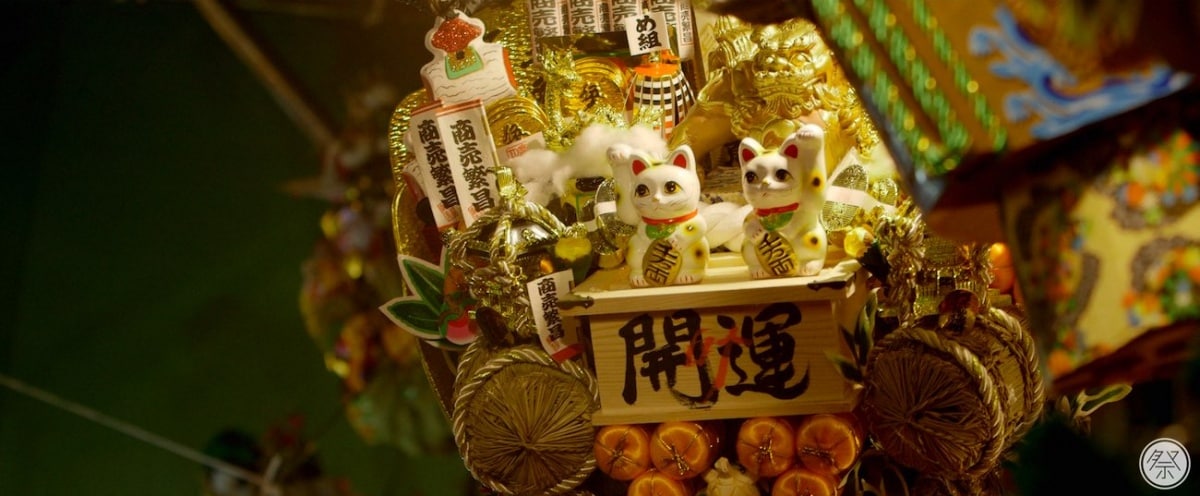
https://ohmatsuri.com/en/articles/tokyo-asakusa-torinoichi
Kakkome and engi-kumade are rake-shaped talismans sold at the Tori-no-Ichi market, which are meant to “gather up” good fortune for business. Simple kakkome are handed out inside the shrine, while colorful engi-kumade, which look almost more like elaborate signposts than rakes, can be purchased at the stalls. These good-luck rakes come in all shapes and designs, and people choose theirs according to their budget and wishes. You're supposed to buy a new one every year. While some people wish for stability in their business by purchasing the same-sized rake each year, most people choose to upgrade to a bigger rake in order to pray for growth. Take your time and find that special rake for you!
Clap Along for Luck!
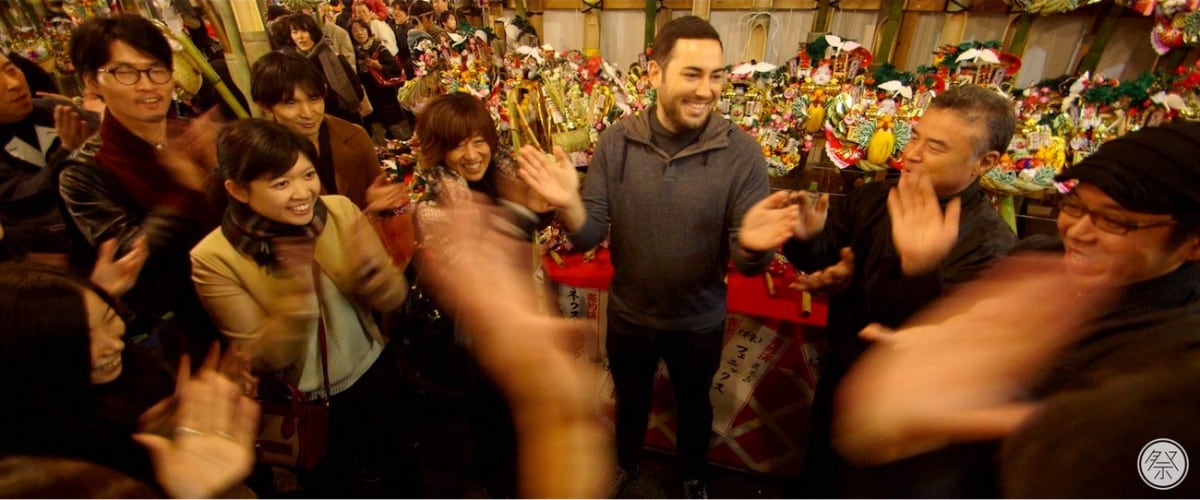
https://ohmatsuri.com/en/articles/tokyo-asakusa-torinoichi
You will hear rhythmic hand clapping all around the rake stalls. These claps are called tejime, and are clapped in unison in a sequence of 3-3-3-1 in order to wish for business prosperity. If you buy a large rake, the shopkeeper will clap with you. If you hear a “Yooooo!” call, that signals the start of a clapping sequence. Clap along together!
Yatsugashira & Kirizansho
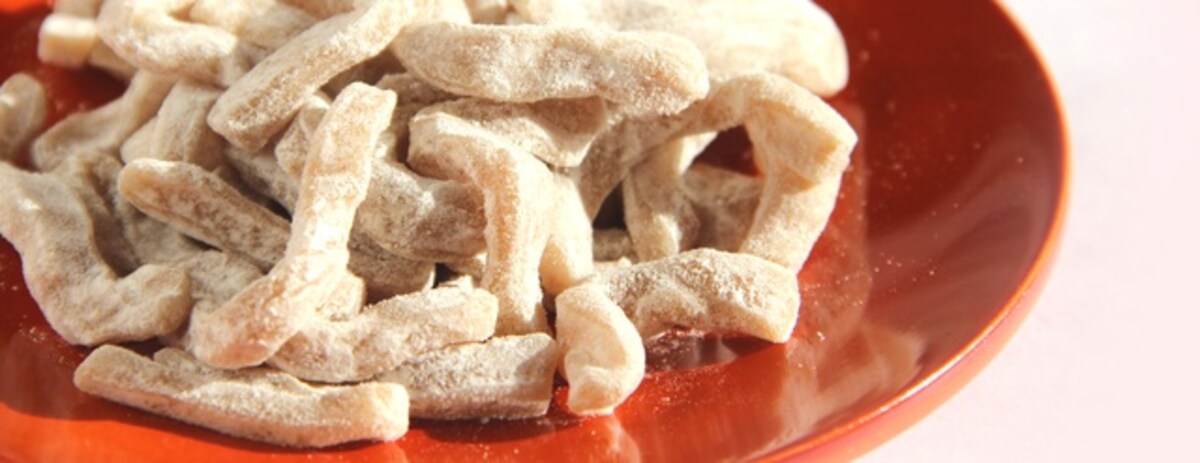
Large taro known as yatsugashira are sold at the Tori-no-Ichi market. They are traditionally regarded as a symbol of good luck and social success, as well as bringing the blessings of many children (because of the many sprouts each taro puts out). Another famous specialty of the market is kirizansho, a mochi (glutinous rice cake) sweet made with powdered sansho (Japanese pepper). Sansho is Japan’s oldest spice, and it's regarded as a symbol of efficacy, since the entire tree (leaves, flowers, nuts, trunk and bark) can be used without any waste.
The Divine Eagle's Descent

https://ohmatsuri.com/en/articles/tokyo-asakusa-torinoichi
At the festival you can witness a traditional dance known as Otori-mai. A dancer rids festivalgoers of evil spirits by vigorously dancing while wearing a sharp-eyed eagle mask, holding in his right hand a bell shaped after the three sacred imperial treasures (the mirror, sword and jewel that appear in Japanese mythology), and in his left, a rake with an okame (traditional female mask). Otori-mai can be viewed at the shrine's Zuiju Watari-den at the following times:
First Appearance: Shortly after midnight (following the striking of the ichiban-daiko)
Second Appearance: Around 6 p.m.
Third Appearance: Around 8 p.m.
(Starting times are tentative)
Rules & Manners
• You may not be able to pass through some streets due to police traffic control.
• Due to crowds, it may take several hours to pray at the shrine during peak times.
• Please be careful not to lose sight of your children.
Access
Otori Shrine
Address: 3-18-7 Senzoku, Taito-ku, Tokyo
Nearest Station
Iriya Station (Tokyo Metro Hibiya Line)
• Walk straight ahead from Iriya Station Exit 3, take a right turn at the first traffic light, cross the intersection at the end of the street, and you will be in front of the shrine.
Toei Bus (都08・草43・草63) Senzoku bus stop
• From the bus stop, walk straight in the direction that the bus came from, and the shrine will be on your right.
There will be crowds of people from the station and bus stop heading to the festival. If you're in doubt, just follow them!
Check OH!MATSURi below for the dates of this year's markets!


